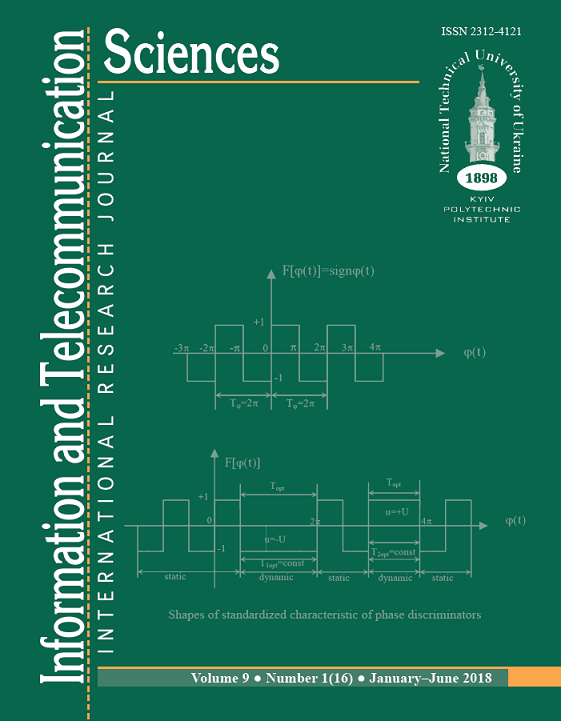INTERNET: MODELS, TECHNOLOGIES, ACCESS SPEED, PROSPECTS
DOI:
https://doi.org/10.20535/2411-2976.12018.19-25Keywords:
Internet, access network, quality indicator, availability indicator, access speed.Abstract
Background. Open multiservice network of telecommunications the Internet has become the most used source of such vital information as: scientific and technical, information, entertainment, and, especially, commercial. Today, it unites 3.36 billion users and provides high economic efficiency of human activity. However, there are many different technologies for accessing Internet services that compete with each other.
Objective. The aim of the paper is to create the Internet network model and a content access model, as the main value of the network from the point of view of the end user, for building an effective network infrastructure.
Methods. Analysis of all known publications on the construction and evaluation of Internet service quality parameters. Analysis of technologies for accessing the network and content. Synthesis of the model of formation and distribution of traffic between levels of the hierarchy of the Internet.
Results. Enlarged indicators of Internet services provision were received. An enlarged scheme for building a global Internet network is proposed. Based on the generalized "end-to-end" scheme of user access to services and network resources, an estimate of the amount of sufficient access speed was obtained. The concepts of hierarchy level and gravitational coefficient are defined for which mathematical relations are derived.
Conclusions. The main task of the providers of any level is to close the traffic as close as possible to the client, i.e. to reduce the gravity coefficient. The task of theoreticians and engineers is to determine theoretically the optimal number of levels (there were only three of them in the model in question) of closure or aggregation of traffic.
Keywords: Internet; access network; quality indicator; availability indicator; access speed.
References
Moore M., Telecommunications. A Beginner's Guide. – St. Petersburg: BHV-Peterburg, 2003. – 624 р. [in Russian]
Revenues from services provided by post and communication 2016 (Online, in Ukrainian): http://www.ukrstat.gov.ua.
Internet Users by Country (2016) (Online): http://www.internetlivestats.com/internet-users-bycountry.
Estimation of quality of Internet services in Ukraine / O. Nedashkivskiy // Modern Problems of Radio Engineering, Telecommunications and Computer Science, Slavske in Lviv region, 23 February, 2016 - 26 February, 2016, р.31.
Measuring the Information Society Report 2016, International Telecommunication Union (Online): http://www.itu.int/en/ITUD/
Statistics/Documents/publications/misr2016/MIS R2016-w4.pdf.
State of the Internet Report _ Akamai.htm (Online): https://www.akamai.com/uk/en/our-thinking/stateof- the-internet-report.
Akamai’s [state of the internet] Q4 2016 report (Online):
Downloads
Published
How to Cite
Issue
Section
License
The ownership of copyright remains with the Authors.
Authors may use their own material in other publications provided that the Journal is acknowledged as the original place of publication and National Technical University of Ukraine “Igor Sikorsky Kyiv Polytechnic Institute” as the Publisher.
ITS articles are published under Creative Commons licence:
- Authors retain copyright and grant the journal right of first publication with the work simultaneously licensed under CC BY 4.0that allows others to share the work with an acknowledgement of the work's authorship and initial publication in this journal.
- Authors are able to enter into separate, additional contractual arrangements for the non-exclusive distribution of the journal's published version of the work (e.g., post it to an institutional repository or publish it in a book), with an acknowledgement of its initial publication in this journal.
- Authors are permitted and encouraged to post their work online (e.g., in institutional repositories or on their website) prior to and during the submission process, as it can lead to productive exchanges, as well as earlier and greater citation of published work.

